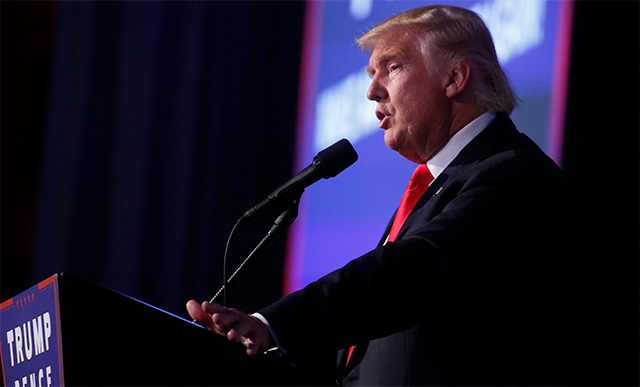
Republican Donald Trump has been elected the 45th president of the United States in a shock victory over Democrat Hillary Clinton that has spooked world markets. But what would a Trump presidency mean for India? Here’s what we can expect.
Trump could renegotiate trade deals
Well, at least he has said so. The Trump campaign ran on an ‘America first’ pitch and he has said that he will renegotiate treaties like the North Atlantic Free Trade Agreement . The not-so-good thing from India’s perspective is that Trump favours the Trans Pacific Partnership, a secretive preferential trade pact among 12 countries along the Pacific Rim including Canada, Japan, Chile, New Zealand, Mexico, Vietnam, Singapore and the US. India is not a signatory to the multinational pact and would, therefore, have to comply with their regulations in order to continue to trade meaningfully with these countries.
Trump could curb H1B visas for workers from India
He has criticised countries such as China and India for taking away US jobs. He has also promised to come down hard on immigration, which could have a bearing on Indian students and IT workers looking for jobs in the US. Immigration has been a dominant theme during much of the Trump campaign. Trump has vowed to get back jobs lost to countries such as India and to end the H-1B visa regime that has benefited Indians.
Trump could mean bad news for IT, pharma companies
Indian IT and pharmaceutical companies earn significant revenue from the US and will be impacted the most. Some of the most important such companies include Tata Consultancy Services, Infosys, Wipro, HCL Technologies, Lupin, Glenmark Pharma, Bharat Forge, Reliance Industries, Tata Motors and Tech Mahindra.
Trump could decrease US intervention in South Asia
If this happens, it will have a negative bearing on India. Less intervention in Afghanistan, central Asia and the Middle East could result in further political instability in these areas, which, in turn, may hurt Indian energy and other strategic interests. Moreover, Indian workers from the Gulf remit money to the order of $70 billion each year, which is a major source of foreign exchange for India.
How have the Republicans generally been for trade relations with India?
A look at historical data for the past 30 years throws up a mixed picture. A VCCircle analysis using India-US trade data since 1985 showed that when the Republicans were in power between 1985 and 1993, the two countries saw a nearly 45% increase in bilateral trade. When the Republicans returned to power in 2001 under George Bush Jr., trade zoomed 200%, registering the best figures for the period under consideration. However, Bush Jr.’s years at the White House saw imports from the US go up by a staggering 380%.
A perusal of publicly available numbers show that, in percentage terms, the number of Indian immigrants to the US doubled from 1980 to 1990 (Ronald Reagan was president during most of this period). However, the largest absolute increases have been during the years of outgoing President Barack Obama, a Democrat.
Like this report? Sign up for our daily newsletter to get our top reports.